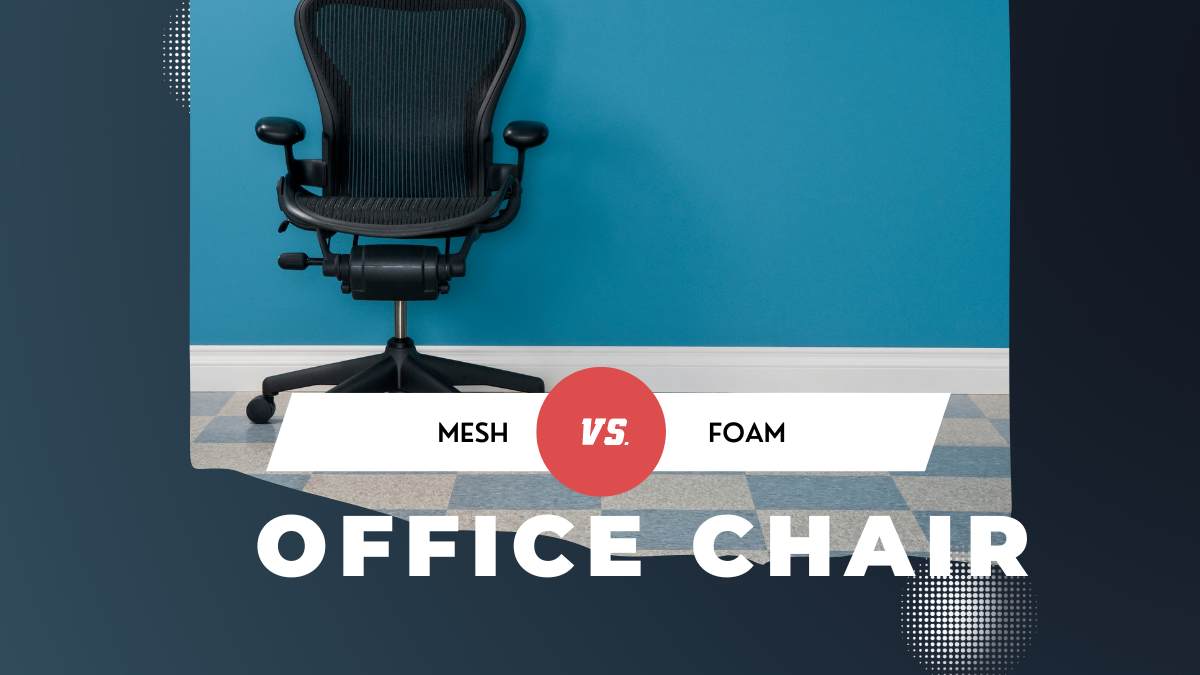
Office chairs with mesh or foam back support both provide ergonomic benefits. Evaluating breathability, comfort over time, targeted adjustments, and durability reveals how these materials differ. Understanding these key factors helps determine which back support material works best for your needs.
Understanding Mesh Back Support for Office Chairs
Mesh is an open weave synthetic fabric often used for office chair backs. It provides several benefits:
Understanding Foam Back Support in Office Chairs
Foam cushioning made from polyurethane is also common in office chairs. Here are some of its advantages:

Comparing Mesh and Foam Office Chair Back Supports
| Feature | Mesh Back | Foam Back |
| Breathability | Superior airflow and breathability | Retains more heat, causes sweat |
| Comfort | More comfortable long-term | Initially softer cushioning |
| Durability | Retains support over time | Compresses and loses shape |
| Adjustability | Targets lumbar support | Broad, consistent support |
| Aesthetics | Uniform visual look | Sculpt ability allows shaping |
| Maintenance | Little required | May need foam replacing over time |
| Cost | More affordable | Premium foams cost more |
Breathability Comparison
One of the standout benefits of mesh over foam is breathability. The porous, woven structure allows generous airflow that foam cannot match. Sitting for hours can generate excess body heat that gets trapped without ventilation.

Mesh material has tiny pores that let air circulate and evaporate moisture. This breathability keeps you cooler and drier compared to sank-in foam which retains heat. Mesh is the optimal choice for those in warmer environments or who are prone to perspiring a great deal.
Comfort Differences
When first sitting down, foam often feels more immediately comfortable thanks to its soft, enveloping cushion that forms around you. But after extended sitting, mesh frequently provides better overall comfort. Mesh conforms to your back without pressure while supporting your spine’s alignment. The flexibility dynamically supports movement and regular shifts in position. Foam can collapse and feel less stable after hours in the same position. So mesh edges out foam in all-day comfort for many people.
| Factors | Mesh Back Support | Foam Back Support |
| Breathability | High | Medium |
| Durability | Medium | High |
| Adjustability | Variable | Variable |
| Overall Comfort | Flexible and lightweight | Cushioned and plush |
Durability and Longevity
Durability is a key advantage of mesh chair backs compared to foam. The woven structure of mesh retains its support and flexibility year after year with little to no degradation. Foam padding inevitably compresses down over months of use, losing its beneficial ergonomic shaping. Lower density foams break down more quickly, with dents forming and support flattening within 1-2 years. High quality mesh maintains its properties for 5+ years or longer before needing replacement. But, may sag over time. So mesh is the more durable choice.
Adjustability and Targeted Support
Mesh often provides tailored ergonomic support for the spine’s lumbar region, while foam is better for overall back cushioning. Mesh chairs frequently have adjustable vertical bands that can be flexed in or out to match the natural S-curve of the lower back. This allows you to customize the level of lumbar support as needed. Foam conforms more generally and does not target specific zones. So mesh excels at tunable, ergonomic adjustments.
Visual Variety in Designs
One area where foam has a slight edge over mesh is in aesthetic variety. The moldable nature of foam padding allows it to be shaped into different backrest contours and silhouettes. This sculptability makes distinctive chair profiles possible. Mesh typically has a more uniform, grid-like appearance with less shaping. But mesh can also be subtly contoured while retaining its breathability. Overall foam offers greater design flexibility.
Key Takeaways Comparing Mesh and Foam Office Chair Backs
- Mesh chairs provide excellent breathability, comfort, and targeted ergonomic adjustments ideal for all-day sitting. But foam cushions contour closely and feel luxurious.
- Combination chairs utilize mesh in the lumbar area for support breathability and foam along the side bolsters for a secure feel.
- There are also high-end meshes with cushioning layers for comfort and low-cost foam with ventilation channels for airflow.
- Test sitting in mesh, foam, and combination chairs yourself to choose what provides ideal comfort and support for your needs.
- Consider your climate, hours spent sitting, and posture support requirements when selecting between mesh or foam. An ergonomic chair is always a worthwhile investment for your health.
Conclusion
Mesh back office chairs provide excellent breathability and ergonomic support. But foam cushions contour nicely and offer initial comfort. Many chairs now incorporate both materials strategically. Try sitting in mesh vs foam chairs yourself to determine which feels best for your needs.







